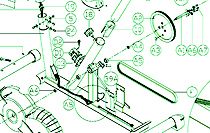
A Plot:
2030. While policy makers and multinationals hold meetings to discuss economic growth and its environmental and social impact, separated from common people by rings of security forces, they fail to notice that the world around them has already moved on. A new generation has taken social change into their own hands, by repurposing devices, reconfiguring spaces, and rewriting conventions with sustainability in mind.
Project Summary:
Today's off-grid alternatives will constitute the transitory architectures of tomorrow. We identify examples of these 'experiments in living' and deploy them in a 'tactical fiction', a film scenario which casually invokes these experiments as an established part of daily life. Fictionalisation allows these experiments to be imaginatively scaled up and elaborated, but also provides the means for them to be reabsorbed into real life.
A key part of the process is the development of workshops for the protagonists of the film, in dialogue with the 'experimenters'. Noortje Marres, researcher at the Institute for Science, Innovation & Society, University of Oxford, will collaborate as associated social scientist.
About the Title:
The term 'function creep' refers negatively to uncontrolled changes in the scope of a program or procedure. The FUNCTION CREEP project reappropriates the phrase as a positive value, to mean the uncontrolled innovation in the use of devices, structures, and processes, out of species necessity and human play.
Process:
1. A (partial) survey of creative 'misuse' of technology, tactical detournements, and experiments in sustainable living that are driven by progressive visions of human society and natural habitat;
2. As part of our own (in-house) collaborative artist-in-residence programme, proponents of selected 'experiments in living' are invited for workshops with a 'cast' of young people in a Peter Watkins-inspired improvisatory framework.
3. The 'cast' performs in a semi-fictional film, FUNCTION CREEP.
___________
Function Creep is supported by
![]()
